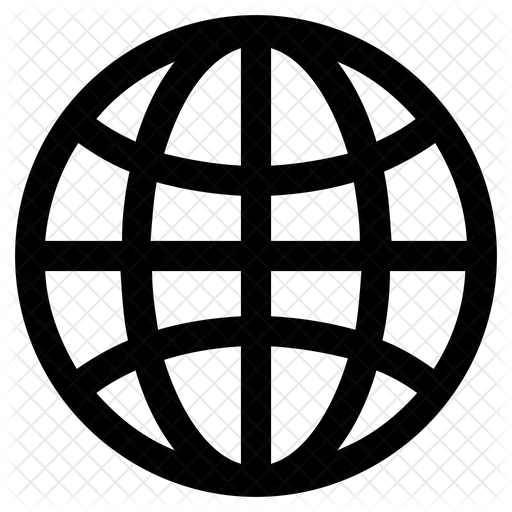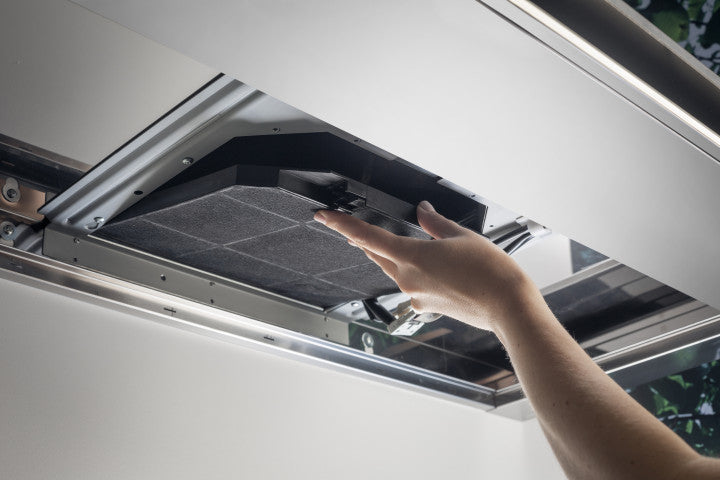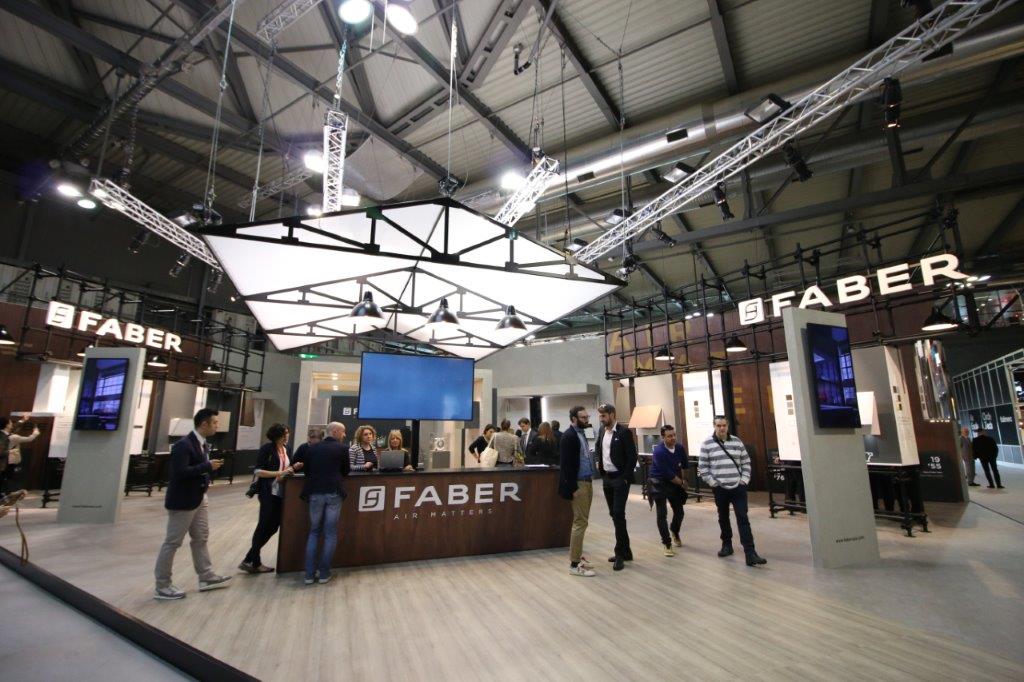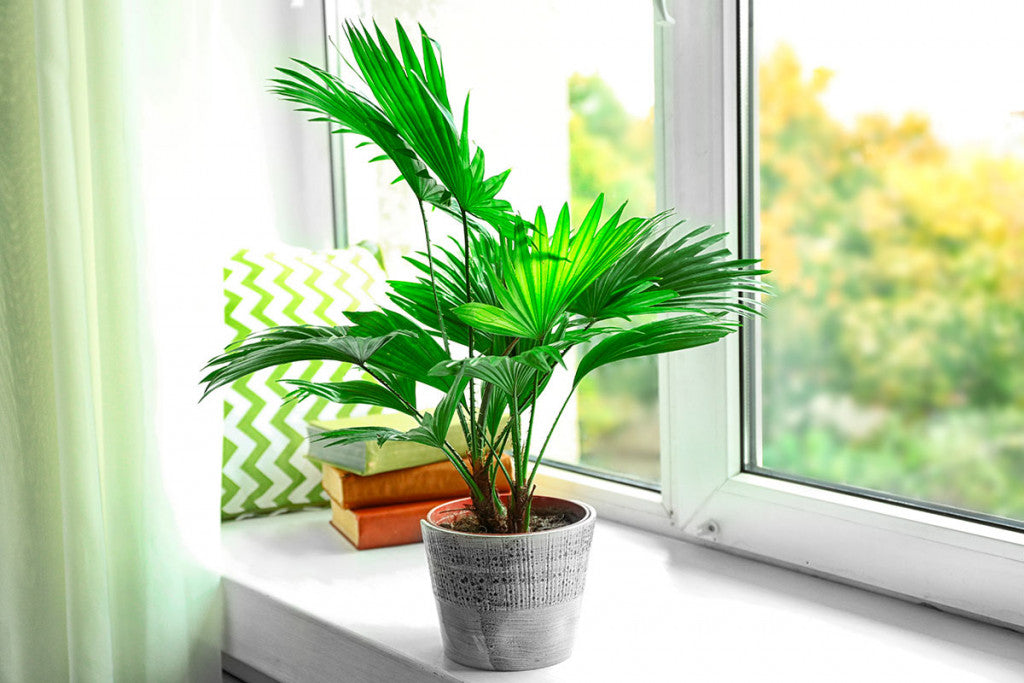As one of the most common solutions to eliminate smoke, odours and vapours when cooking in modern kitchens, the installation of a cooker hood with an active charcoal filter allows you to cook whatever you want without leaving unpleasant odours behind, avoiding the harmful effects of indoor pollution in a highly exposed environment.
For this type of suction element to perform its function to the best of its ability, it is essential that it is cleaned periodically, both externally and internally, paying particular attention to the active carbon filter as an essential step. By allowing all cooking vapours and fumes to be fully extracted, proper maintenance effectively blocks the proliferation of germs and harmful bacteria, ensuring that it is always at its most efficient.
In this article, we will take a closer look at the features and operation of this type of kitchen hood, focusing on the importance of cleaning and maintaining activated charcoal filters, with some valuable tips on how to keep them in optimal condition.
Extractor or filtration hoods?
Removing the fumes and odours produced during meal preparation, hoods help to maintain a clean and comfortable kitchen environment.
However, they can be installed in different ways to achieve this purpose:
- Extraction mode - The hood expels exhausted fumes and vapours outside the house through a duct. It is the most common type of kitchen hood. It provides high performance, high extraction capacity and low noise levels; however, it requires good piping system design.
- Filtration Mode - In this case the recycling cooker hood removes odours thanks to a specific charcoal filter and returns air to the kitchen environment. A suitable option when an external air outlet is not available: its advantages include ease of installation and the almost total absence of energy loss due to the discharge of hot internal air through the hood.
Integrated or wall-mounted, suspended or ceiling-mounted: the wide range of Faber kitchen hoods covers every specific consumer need, responding to different functional requirements as well as personal aesthetic preferences.
Activated carbon filters: characteristics and functions
Cleaning and deodorising the air is a crucial aspect when cooking - not only in our domestic environments, but above all in the case of catering businesses. However, what is the difference with activated carbon cooker hoods compared to conventional filter systems?
Activated charcoal filters are a strategic choice for extractor hoods due to their ability to eliminate unwanted odours and cooking fumes in the kitchen. Consisting of a porous material, such as activated charcoal, they have a high absorption capacity when it comes to odorous particles, which results in fresh, cleaner air in your kitchen, making the cooking experience much more pleasant and safe.
Activated carbon filters in kitchen hoods: maintenance
To ensure that your hood performs at its best and extracts properly every time it is used, it is important to clean it periodically and to maintain all filters correctly, cleaning or replacing them as required. Neglecting its hygiene over time could lead to build-up that is difficult to remove and hinders the filter function: when saturated with particles, filters have a reduced ability to remove odours.
Just like with the maintenance of activated charcoal filters, it is important to distinguish between disposable filters and "long-lasting" regenerable filters. In fact, the former cannot be regenerated, but must be periodically replaced; they have a service life of ranging from 3 months (in the case of filters with cylinders or charcoal flakes with an efficiency of over 50%) to 6 months (for those with textile carbon on polyurethane with an efficiency of 90%), depending on the effective use of the cooker hood, in terms of both the type and frequency of cooking. This replacement must be carried out before the filters become saturated: when they reach this stage they render the use of the kitchen hood futile, creating a sort of 'plug' that prevents the proper flow of cooking vapours.
However, exceptions to this rule include certain types of filters, those that are regenerable filters of activated carbon filters in Faber's kitchen hoods. In fact, Faber has developed a new activated carbon filter that can be used multiple times. Thanks to the multilayer technology, the long-lasting filter further increases filtration efficiency. In fact, the double layer, through an initial pre-filtering, captures the coarsest particles and with a second filtering at a higher concentration, ensures optimal air cleanliness. The filter is dishwasher-safe every 3-4 months, for a maximum service life of 3 years, and can be dried at room temperature by holding it upright, to facilitate the escape of water, or alternatively it can be placed in an oven at a temperature of 50° C.
A solution that, once again, proves to be perfectly responsive to the needs of practicality and efficiency in our daily domestic life.












